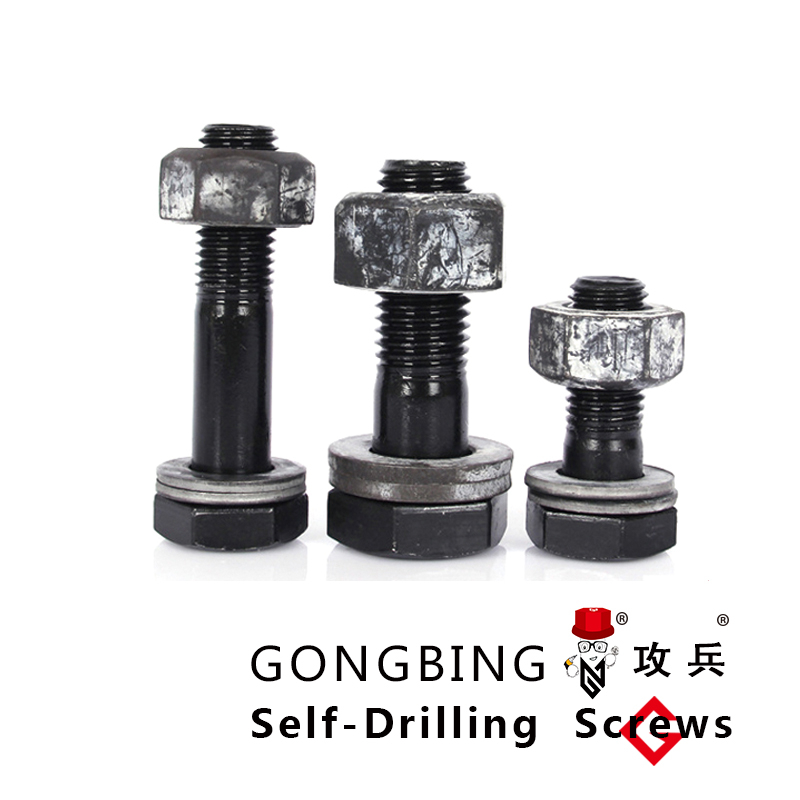double end threaded rods
Understanding Double End Threaded Rods Versatility and Applications
Double end threaded rods, often referred to as stud bolts or double-ended bolts, are essential components in various construction and engineering applications. These rods are characterized by having threads on both ends, with a smooth, unthreaded portion in the middle. This unique design allows them to be effectively utilized in a range of settings, making them a versatile option for mechanical and structural needs.
Construction and Design
The primary feature of double end threaded rods is their dual threads, which can be of different diameters or the same size. Typically made from materials such as stainless steel, carbon steel, or other alloys, their strength and durability are paramount when it comes to heavy industrial applications. The manufacturing process involves precise machining to ensure the threads are uniform and meet specific dimensional tolerances, which is crucial for ensuring proper fit and load distribution.
The unthreaded section serves multiple purposes it provides a shear point to distribute loads evenly, prevents galling between connected materials, and allows for easier handling during installation. The design can vary based on the application, with some rods featuring a continuous thread along the entire length for enhanced grip.
Applications
Double end threaded rods are utilized in a multitude of industries, including construction, automotive, and manufacturing. In construction, they are commonly used to fasten structural elements such as beams, columns, and trusses. Their ability to provide stability and strength makes them ideal for load-bearing applications. For instance, in tension or compression setups, these rods can secure components together, ensuring that structures remain intact under various stresses.
double end threaded rods

In the automotive industry, double end threaded rods are used to connect engine components, transmissions, and suspension systems. Their robustness allows them to withstand the high forces and vibrations inherent in automotive applications.
Manufacturers also employ these rods in scaffolding, machinery, and furniture assembly. The ability to create adjustable connections is particularly advantageous, as it allows for flexibility in design and assembly processes. When combined with nuts or other fastening hardware, double end threaded rods can create secure, dismantlable connections that can be adjusted or reconfigured when necessary.
Installation and Maintenance
Installing double end threaded rods is typically straightforward, but the accuracy of threading and alignment is crucial. Proper tools and techniques must be used to ensure that the rods are inserted into the designated fixtures securely. Maintenance is often minimal, though periodic inspections are advisable to check for signs of wear, corrosion, or loosening.
When working with double end threaded rods, it is important to adhere to recommended load specifications as exceeding these limits can lead to structural failures. Selecting the appropriate material and thread size according to the specific application is crucial for ensuring safety and effectiveness.
Conclusion
Double end threaded rods represent a fundamental component in modern engineering and construction. Their unique design combines versatility with strength, making them a preferred choice in various applications. Understanding their properties, installation procedures, and maintenance can significantly enhance their performance and longevity, leading to successful outcomes in diverse projects.
-
Weatherproof Plastic Expansion Anchors for OutdoorNewsJun.06,2025
-
Sustainability in the Supply Chain: Eco-Friendly TEK Screws ProductionNewsJun.06,2025
-
Load-Bearing Capacity of External Insulation FixingsNewsJun.06,2025
-
Double Head Bolts: Enhancing Efficiency in Industrial MachineryNewsJun.06,2025
-
Corrosion Resistance in Chipboard Screws: Coatings for Wholesale DurabilityNewsJun.06,2025
-
Butterfly Toggle Bolts : Enhancing Structural ResilienceNewsJun.06,2025
